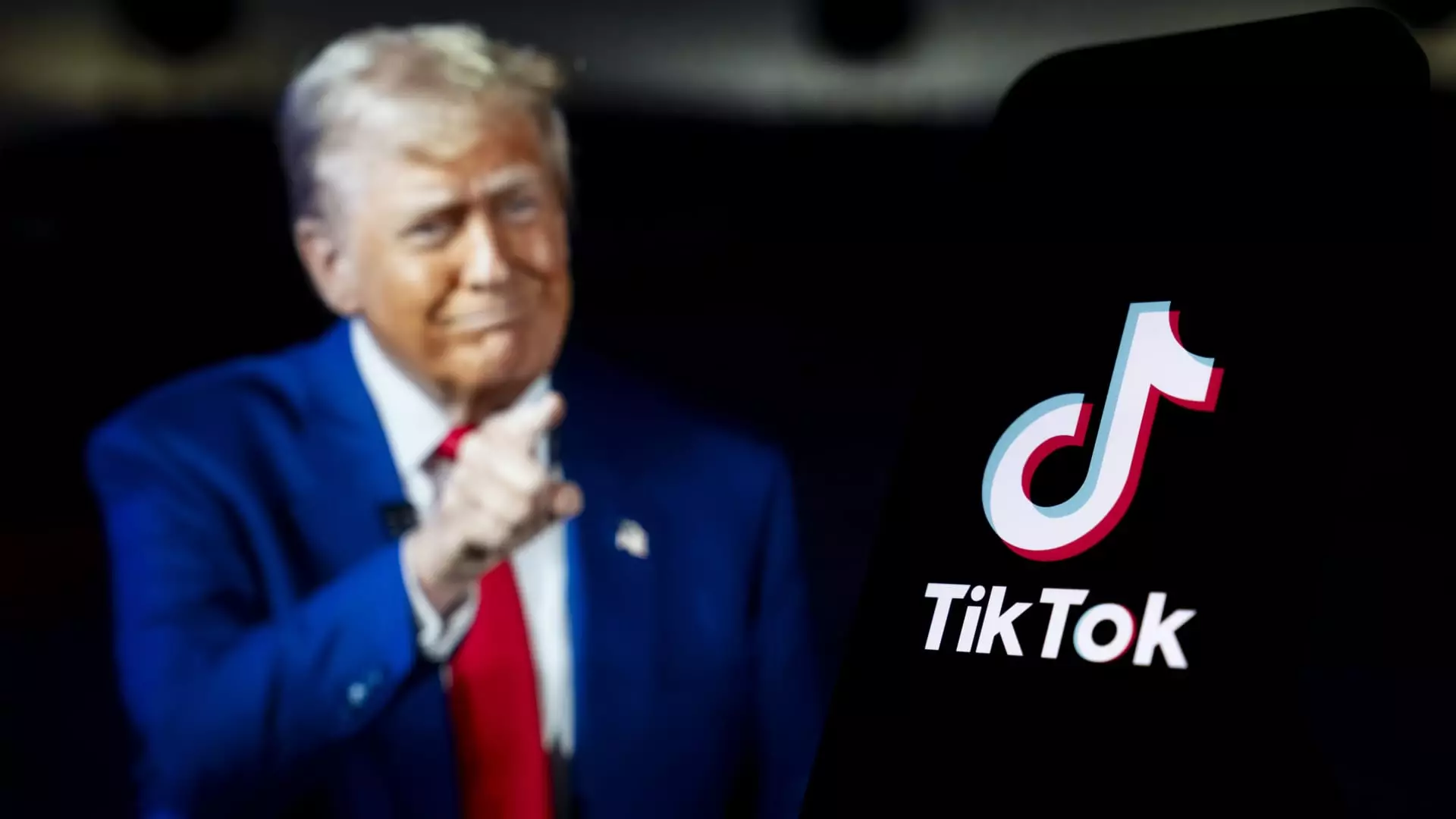In a striking comeback narrative, TikTok has nearly returned to its pre-disruption traffic levels following a significant drop of 85% during a brief suspension earlier this month. According to Cloudflare Radar, which provides insights into global internet activity, TikTok’s DNS traffic has stabilized to a level about 10% lower than its usual metrics prior to the shutdown. This resilience in user engagement highlights the platform’s stronghold in the digital landscape, especially among its dedicated creator community.
The shutdown occurred against a backdrop of legal challenges when a ruling by the Supreme Court upheld legislation mandating the Chinese-owned parent company, ByteDance, to divest its ownership. Consequently, leading app hosts, such as Apple and Google, removed TikTok from their platforms to comply with this ruling, leading to an unsettling period for its users and creators. Thankfully, the tides shifted when former President Donald Trump intervened, delaying the enforcement of the ban, thus allowing TikTok to bounce back online.
The legal landscape surrounding TikTok has been fraught with uncertainty since 2020 when discussions of a possible ban first emerged during Trump’s presidency. The current political environment continues to influence the platform’s future. Trump’s executive order, which extended enforcement deadlines, reflects a unique interplay between politics and technology, wherein the administration’s decisions directly affect social media dynamics and user engagement.
As the discussion around ownership remains in flux, with several prominent U.S. investors like Mr. Beast and Elon Musk showing interest, the platform has managed to retain a significant portion of its user base despite the turbulence. The recovery in traffic and the ongoing support from creators demonstrate a collective commitment to TikTok amidst the uncertainties.
While TikTok appears to have rebounded, the anxiety surrounding its long-term viability has prompted many creators to diversify their presence across various platforms. Creators like Dylan Lemay, who boasts over 10 million followers, exemplify this proactive approach. Lemay’s strategy to cultivate an audience on YouTube, which now generates reliable income, underscores the necessity for creators to adapt and prepare for potential setbacks on any one platform.
In fact, data indicates that during the days leading up to the shutdown, traffic to TikTok alternatives such as RedNote surged, accompanied by a sustained increase in activity on these platforms. However, the challenge persists; many creators find that their TikTok content does not translate effectively to alternative channels like YouTube Shorts or Instagram Reels, impacting their audience reach and revenue potential.
As TikTok’s future continues to hang in a precarious balance, many creators are feeling the economic ramifications. Brand partnerships, crucial for financial sustainability, are now undergoing revisions as companies reevaluate their marketing strategies in light of the platform’s uncertain status. Creators such as Noah Glenn Carter and Michael DiCostanzo are grappling with reduced viewership on other platforms and potential shifts in brand collaborations, prompting concerns about maintaining income levels.
Meta, seeking to capitalize on TikTok’s challenges, is reportedly enticing creators with deals to promote its platforms, illustrating the competitive pressures in the social media landscape. This activity underscores the fierce battle for attention among platforms as they jostle for the allegiance of creators and audiences alike.
Despite the challenges posed by the potential ban and competitive alternatives, many creators remain optimistic about TikTok’s ability to foster a unique sense of community and engagement that is hard to replicate elsewhere. As Michael DiCostanzo aptly points out, other platforms have yet to cultivate the same environment where creators can thrive. TikTok’s robust community atmosphere and interactive features continue to resonate deeply with users, distinguishing it from its competitors.
This community-focused approach not only enriches user experience but also fortifies creator loyalty, allowing TikTok to rebound quickly following interruptions.
The landscape of social media is intricately tied to legal, political, and economic factors, and TikTok’s recent journey reflects the volatility that can impact digital platforms. While it demonstrates remarkable resilience in recovering user engagement, the platform’s future remains laden with uncertainty. As creators adapt to the evolving dynamics of the digital world, their proactive strategies may determine not just their individual success but the broader trajectory of content creation across platforms.


Leave a Reply